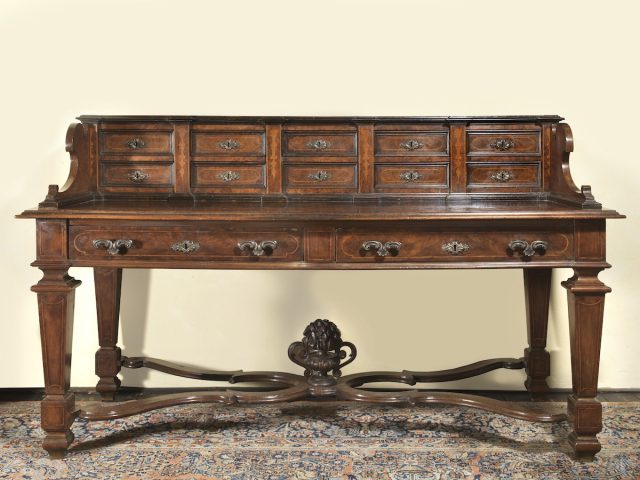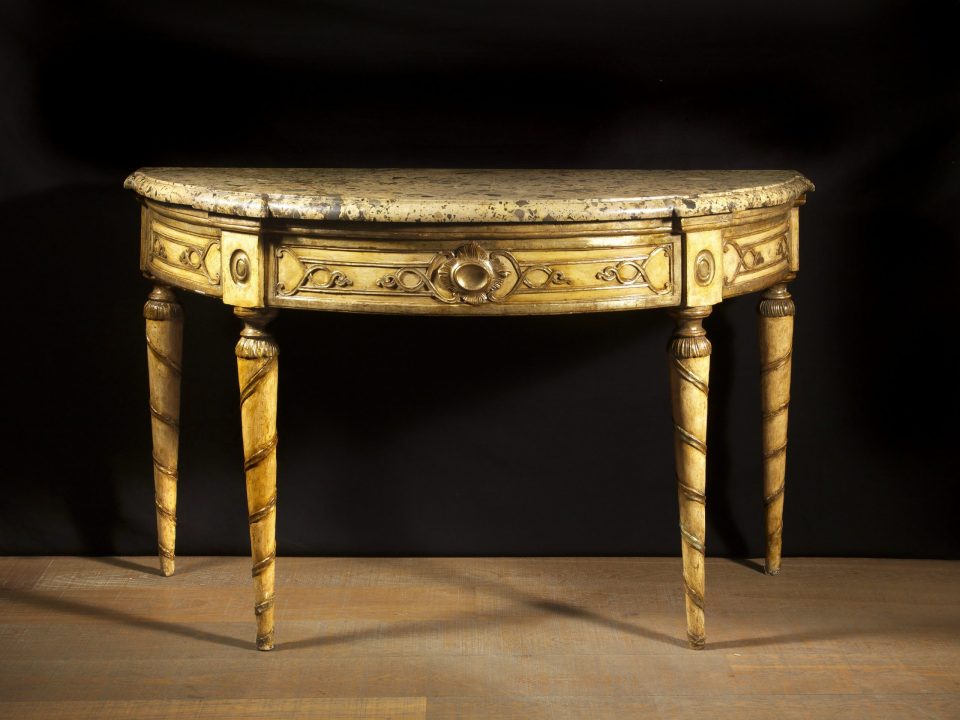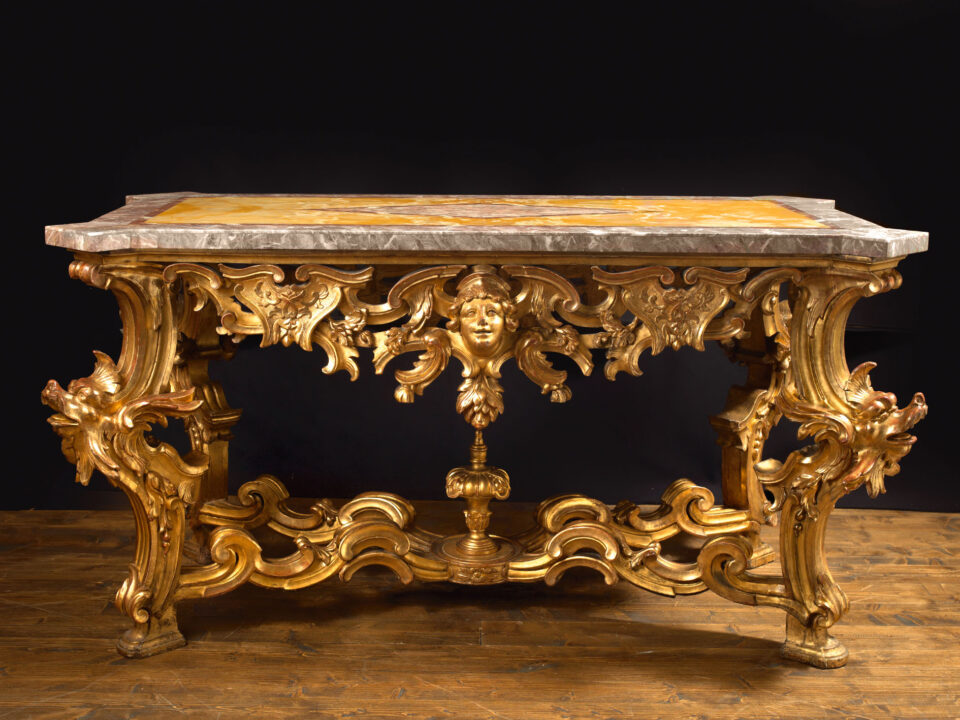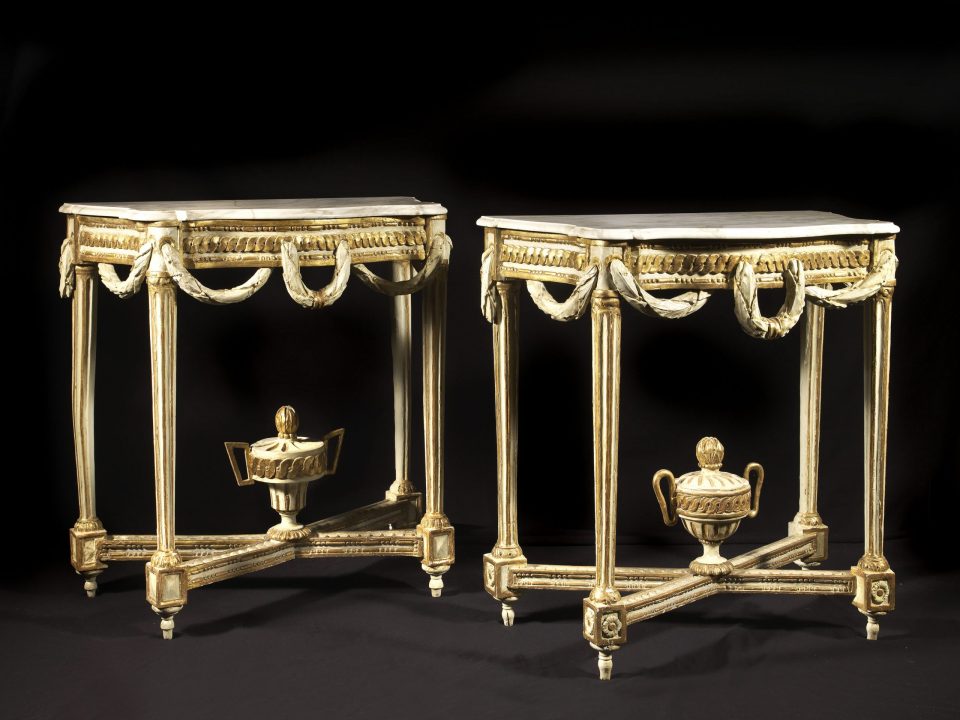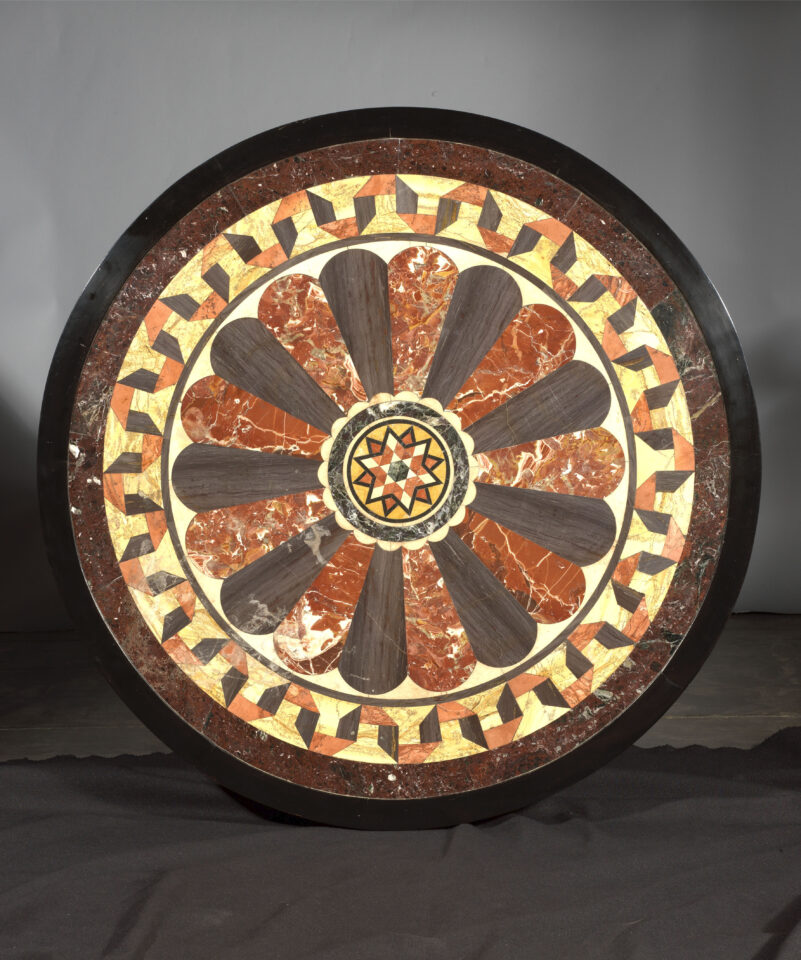SAN FILIPPO TABLE-DESK
walnut wood and walnut root
This sizable elegant writing desk veneered with walnut root is enriched on every side by ebonized outlines and geometric designs hinted by fruitwood thread inlays. It has an upstand with a double order of drawers divided by pilasters, a flat top with a molded frame, an under-desktop with two drawers and shaped sides.
Truncated-pyramid legs kept together by countered crossbars centered by a non-coeval pinnacle.
Rome, end of the 17th century
cm 115x191x88

